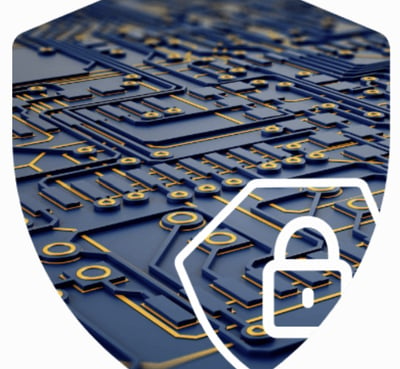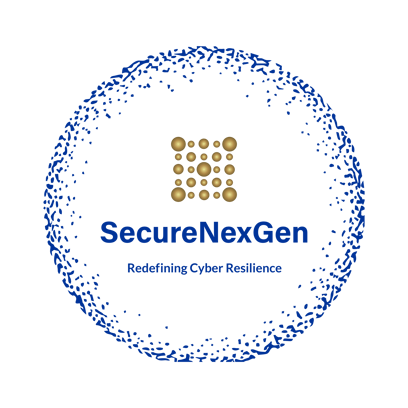Comprehensive Cyber Security Assessments
Protect What Matters Most with Our End-to-End Cyber Risk Reviews
A comprehensive cybersecurity assessment is a crucial process that involves identifying, assessing, and prioritizing risks to an organization's information and information systems. It helps organizations understand their vulnerabilities, threats, and potential impacts, enabling them to make informed decisions and allocate resources effectively. Here's a high-level overview of the steps involved in conducting a comprehensive cybersecurity assessment:
Identify the specific aspects of the business, such as a business unit, location, or specific systems, that need to be assessed. This helps in focusing on the most critical areas and avoiding an overwhelming process
Identify critical digital assets: Determine the organization's most valuable assets, such as data, systems, and applications, as these are the primary targets for cyber attackers
Assess vulnerabilities and threats: Identify potential cyber threats and vulnerabilities that could affect the organization's critical digital assets. This may include reviewing past incidents, analyzing current security measures, and understanding the organization's risk profile
Analyze risk: Evaluate the likelihood of hackers exploiting the identified vulnerabilities and the potential impact on the organization's assets and reputation. This can be done using risk assessment methodologies, such as the NIST Cybersecurity Framework or the ISO 27001:2013 standard
Document and communicate findings: Create a comprehensive report that outlines the assessment's findings, recommendations for improvement, and prioritized remediation plans. Share this report with stakeholders, including executive management, security teams, and board members, to ensure they understand the organization's cybersecurity posture and can make informed decisions
By following these steps, organizations can conduct a thorough cybersecurity risk assessment that helps them better protect their digital assets, reduce long-term costs, and make informed decisions about their cybersecurity strategy.
Vulnerability Assessment & Penetration Testing (VAPT)
Vulnerability Assessment & Penetration Testing (VAPT) is a comprehensive cybersecurity practice that aims to identify, evaluate, and mitigate potential vulnerabilities in a system or network. This proactive approach helps organizations strengthen their security posture and protect against potential cyber threats. Here's an overview of Vulnerability Assessment and Penetration Testing:
Vulnerability Assessment (VA):
Definition:
A systematic evaluation of an organization's information systems, network infrastructure, and applications to identify potential vulnerabilities.
Objectives:
Identify weaknesses and vulnerabilities.
Prioritize risks based on severity.
Provide a baseline understanding of security posture.
Methodology:
Automated tools are often used to scan systems and networks for known vulnerabilities.
Manual inspection may also be performed to identify potential issues that automated tools may miss.
Benefits:
Early detection of vulnerabilities.
Helps in compliance with security standards.
Establishes a foundation for further security measures.
Penetration Testing (PT):
Definition:
A simulated cyberattack on a system, network, or application to assess its security by exploiting vulnerabilities in a controlled environment.
Objectives:
Test the effectiveness of security controls.
Mimic real-world attack scenarios.
Provide insights into potential impact and risks.
Methodology:
Ethical hackers (penetration testers) attempt to exploit vulnerabilities to gain unauthorized access, escalate privileges, or compromise data.
Testing may involve different levels of access, from external attacks to internal threats.
Benefits:
Identifies security weaknesses that may not be apparent in a vulnerability assessment.
Offers a more realistic view of potential risks.
Helps organizations understand how well their defenses can withstand real-world attacks. Vulnerability Assessment & Penetration Testing (VAPT) is a comprehensive cybersecurity practice that aims to identify, evaluate, and mitigate potential vulnerabilities in a system or network. This proactive approach helps organizations strengthen their security posture and protect against potential cyber threats. Here's an overview of Vulnerability Assessment and Penetration Testing:


Source code review, also known as static code analysis or static code review, is a process of examining the source code of a software application without executing it. The primary goal is to identify and fix security vulnerabilities, coding errors, and adherence to coding standards before the software is deployed. Code review is a critical part of the software development lifecycle, contributing to the overall quality, security, and maintainability of the codebase.
Key Aspects of Source Code Review
1. Security vulnerabilities
Identify and address common security issues such as injection flaws, broken authentication, insecure data handling, and improper error handling.
2. Code quality
Evaluate the overall quality of the code, including its readability, maintainability, and performance efficiency.
3. Coding standards
Ensure adherence to coding conventions and industry best practices established by the development team or regulatory frameworks.


Network Architecture and Security Review


Conducting a Network Architecture and security review is essential for ensuring that an organization's network is designed, implemented, and maintained to meet security requirements and best practices. Network security assessments help identify vulnerabilities in network infrastructure, such as misconfigurations, outdated firmware, and weak access controls. Identifying these vulnerabilities is crucial for preventing unauthorized access and potential exploits.
Networks are a primary target for cyber attacks. Assessments help identify weaknesses that could be exploited by attackers, including DDoS attacks, Man-in-the-Middle (MitM) attacks, and other network-based threats.
The main objectives of a Network Architecture review are:
Identifying weaknesses and gaps in existing security controls.
Comparing the alignment of security controls with current industry standards and best practices.
Providing an actionable roadmap to identify risks and remediate security gaps.
These reviews can be conducted by specialized security firms or in-house teams, depending on the organization's needs and resources. The results of these reviews typically include a detailed report with recommendations and solutions based on the findings.
Configuration Review and System Hardening
The configuration of a system plays such a pivotal role in its security. A misconfiguration will always leave a system vulnerable to a cyber attack and will sometimes lead to bypassing of security controls altogether. Insecure configurations come in the form of insecure services, use of default credentials, and missing important patches. System hardening on the other hand is the process of making a computer system more secure by eliminating potential attack vectors and reducing the attack surface. It focuses on levels of privilege, user groups (admins and standard user accounts), access to storage media, shared files, and the right to change/ adjust system settings.
Benefits of configuration review and system hardening
Compliance – you remain compliant to industry standards such as PCI and DSS
Enhanced security brought about by a reduced attack surface
Optimal system functionality – removing unnecessary programs and disabling unwanted services will ensure your system is running optimally with fewer interruptions.


Cloud Security Review
Cloud security review is a comprehensive assessment of your cloud infrastructure, services, and configurations to ensure they are secure, compliant, and resilient against modern cyber threats. The primary objective is to identify misconfigurations, security gaps, and compliance risks before they can be exploited. A cloud security review is a critical component of a secure cloud adoption strategy, contributing to the overall security, governance, and reliability of cloud-based environments.
Key Aspects of Cloud Security Review
1. Configuration assessment
Evaluate cloud service configurations (e.g., IAM, storage, compute, networking) for security best practices and misconfigurations that could lead to unauthorized access or data exposure.
2. Access management
Review identity and access controls to ensure the principle of least privilege is enforced and multi-factor authentication (MFA) is properly implemented.
3. Data security
Assess data storage and transmission methods to ensure encryption is applied appropriately, both at rest and in transit.
4. Compliance alignment
Ensure that cloud deployments meet relevant regulatory and industry standards such as ISO 27001, GDPR, HIPAA, or PCI-DSS.
5. Logging and monitoring
Verify that logging, monitoring, and alerting mechanisms are in place to detect and respond to anomalous activity or threats in real time.




Consulting and Compliance Services
Consulting and compliance services help organizations align with regulatory standards and cybersecurity best practices. These services focus on identifying compliance gaps, improving governance, managing risks, and preparing for audits.
Key Focus Areas
Regulatory gap assessment (e.g., ISO, RBI, SEBI, CCA, etc)
Policy development and risk mitigation
Audit readiness and continuous compliance monitoring
Some of the Key regulatory assessments
Assistance in Implementing and Assessing Compliance for ISO 27001:2022
Implementation Support and Compliance Assessments for ISO 27701
Assistance with Compliance to Master Directions and Guidelines for NBFCs issued by RBI
Audit Services for RBI Data Localization
Audit Services for RBI Payment Aggregators and Payment Gateways
Assessment of NPCI Unified Payments Interface (UPI)
Compliance Audits for UIDAI AUA/KUA
Assessment of Cyber Security Framework in line with SEBI Guidelines
Systems Audit in accordance with SEBI Regulations
Compliance Assessment for IRDAI Requirements
Compliance Assessment for Public Key Infrastructure (PKI) of Certifying Authorities (CAs)
Assessment of Compliance with PCI DSS Standards
IT/IS GAP Assessment Services
Co-Source and Internal Audit Assistance
